How to Tell If a Cat Is Declawed (3 Methods)

Updated on
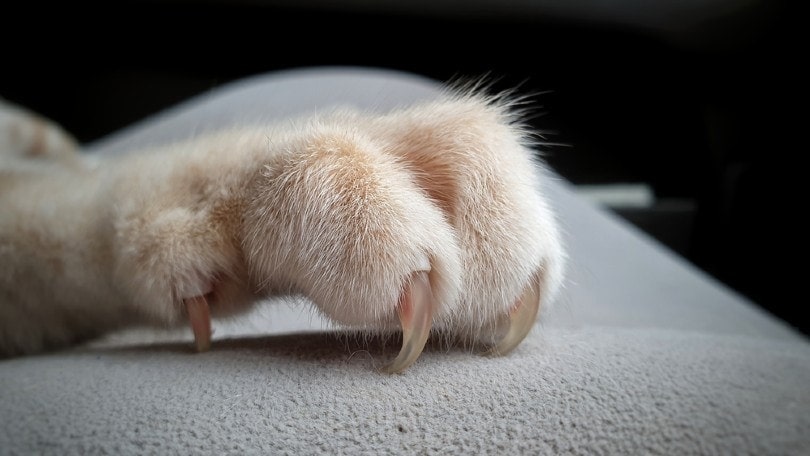
Declawing is a surgical procedure performed under anesthesia that removes the last bone on each of a cat’s toes. Unlike trimming a cat’s nails, this procedure prevents the nails from growing back at all. The procedure is declining in popularity. The Humane Society of the United States is against this practice. In several states and cities in the United States and many countries around the world, declawing cats is either illegal or banned.
Some cats that have been declawed by their owners can find themselves homeless. Many declawed cats are surrendered to shelters and can wind up living outside as strays. If you’ve recently taken in a stray or adopted an older cat, you may be wondering how you can tell if your new friend has their claws.
Let’s look at the importance of cat claws and how to tell if they’re intact. If you do find claws on your kitty, we show you how to safely trim them.
Can Cats Retract Their Claws?
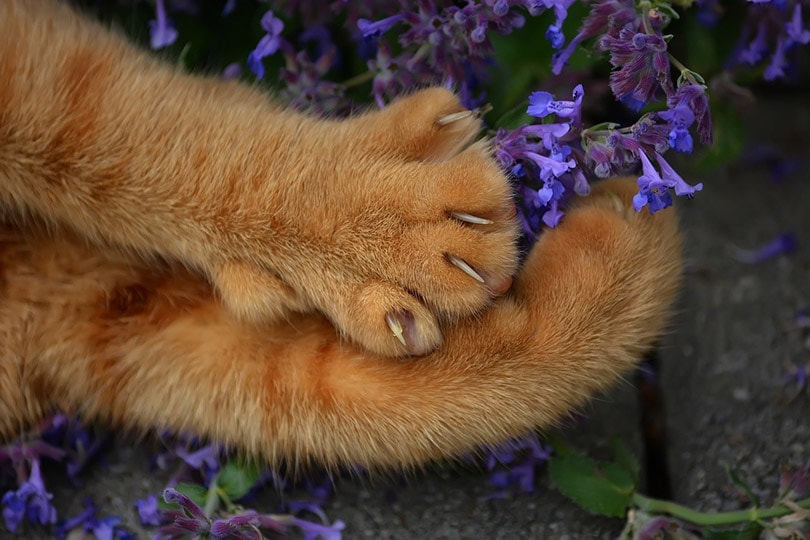
Cats normally have five clawed toes on each front foot and four clawed toes on each back foot. The shorter digits on the inner sides of the front feet are known as dewclaws, and these are designed to help cats hold their prey.
Cats can extend and retract their claws on their front feet. These claws don’t retract fully into the paw, however. Even in a relaxed state, the tips of the claws can be seen as they protrude through the fur. This is especially true if the cat’s nails have not been trimmed recently.
Since the claws cannot be fully hidden, there are a few ways to tell if your cat is declawed.
Back Claws
When people choose to declaw their cats, many opt to just remove the front claws. Since cats can do the most damage with their front claws, this is a less invasive and less expensive option. The back claws are left intact. Some people do decide to fully declaw their cats, though, removing the claws on all four paws.
The back claws on cats are usually easily seen without having to do much other than look. If you see that your cat clearly has rear claws, you know that they were not given a four-paw declaw. So, it’s time to check the front paws.
Before You Start
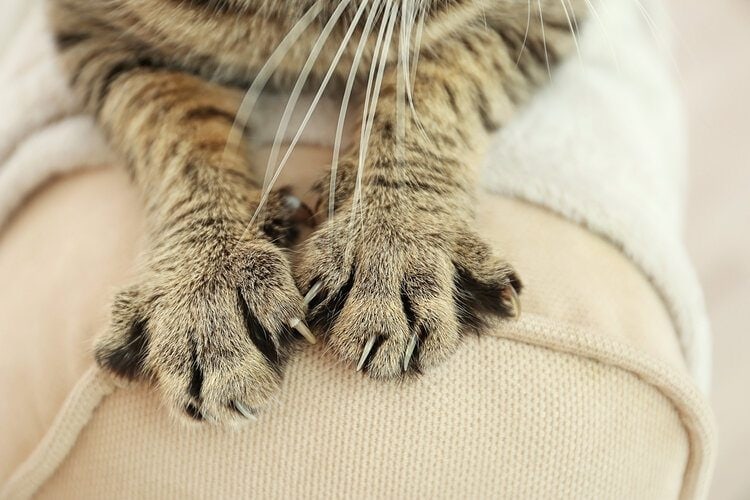
Before you begin, you should have a few things on hand if you wish to trim any claws that you find. First, you’ll need a nail clipper. This is not the same clipper that you would use to cut your own nails. Cat claws have different textures and shapes than human nails and require special clippers to avoid broken and splintered claws. Other items that you’ll need include:
- A flashlight
- Cat treats
- Styptic powder to stop any bleeding
Checking for Cat Claws
If you don’t see any claws on your cat’s back feet, this means they are likely declawed in the front too. Rarely are cats only declawed on their back feet. It’s best to check, anyway, so you know which claws, if any, you’ll need to trim in the future.
Method One
- Offer your cat a treat to distract them and get them to associate their feet being touched with something positive.
- Gently run your finger along the front of their paws, feeling for any sharp claw tips.
- If no claws are detected, carefully take your cat’s paw between your thumb and forefinger and gently apply pressure. Squeeze from the top and bottom to push the claws forward and out.
- If claws are present, you will see them extend out of the paw. If no claws extend, your cat is declawed. If the cat has black feet, the claws may also be black. These claws are hard to see, so you may need a flashlight to notice them.
This can be difficult to do if you have a squirmy cat that does not like having their feet touched. To see if your cat has claws without manipulating their paws, try the next methods instead.
Method Two
- Grab a cat dancer toy and entice your kitty to play.
- As they jump and grab at the toy, allow them to catch it with their front paws.
- You should notice the front claws extend out as the cat tries to capture the toy and hold it.
Method Three
- Set up a cat scratch pad or post.
- Encourage your cat to use it by offering them treats or sprinkling catnip on the scratching area.
- When your cat uses the post, notice if they scratch it with claws. If they just rub their paws on it but there is no scratching, the cat is likely declawed.
Trimming Claws
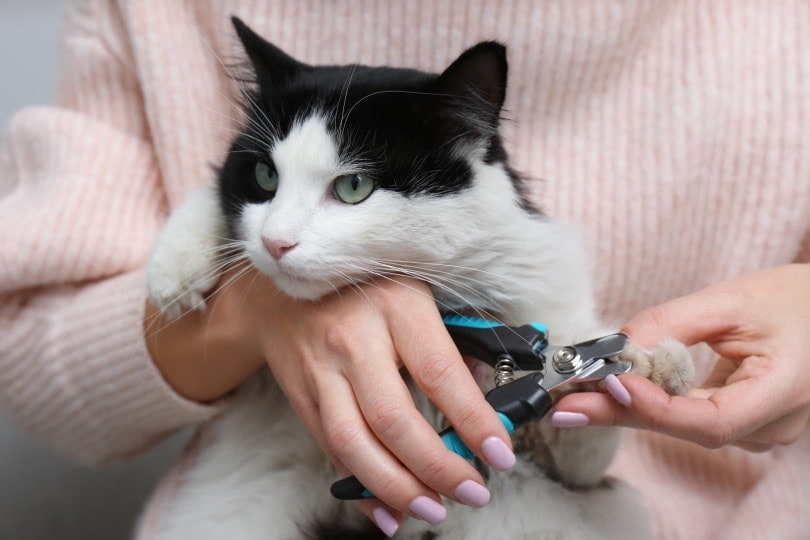
If you notice that your cat has claws and you’d like to trim them, follow the steps in Method One to extend the claws.
Then, take your cat nail trimmers, and carefully clip off the tip of the claw, stopping before the quick. The quick is a pink stripe at the base of the nail that is easily seen through light-colored claws. It contains nerves and blood vessels, so cutting this will cause your cat to bleed and feel pain. If the claws are dark, a flashlight will help you see the quick.
Continue trimming the tips of each front claw, including the dewclaws. Move on to the back nails and trim the tips off them, avoiding the quicks. Reward your cat with treats or catnip when you’re finished.
Trimming your cat's nails isn't the easiest task in the world, but a well-designed set of clippers can make all the difference. Our Hepper Cat Nail Clipper Set features two sizes of clippers with easy-to-clean stainless steel blades and a built-in safety guard to prevent accidental cuts. These clippers are comfortable to hold, nicely designed to work at tricky angles, and even include a bonus hidden nail file and a convenient pouch!
Cutting the Quick
Sometimes, no matter how careful you are, accidents can happen. If you cut the quick in one of your cat’s nails, it will be unpleasant for the cat. This can heal, but the bleeding should be stopped as soon as possible.
Put a pinch of styptic powder to the end of the bleeding nail, and apply pressure until the bleeding stops. Add more powder if necessary. Once the bleeding stops, wipe off the powder, and avoid trimming that nail for a few weeks until it grows long again.
I Disagree with Declawing, So Can I Adopt a Declawed Cat?
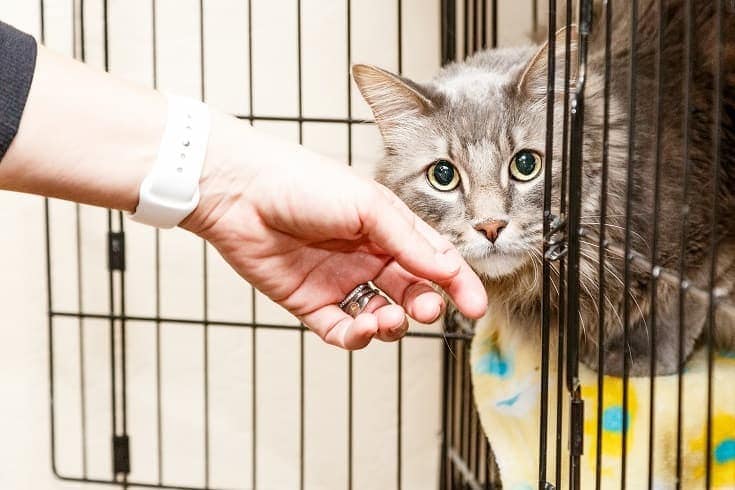
Even if you oppose the practice, there is nothing wrong with adopting a cat that has already been declawed. These cats still deserve loving, happy homes. If you’ve found a cat that is declawed or see one at the local shelter that has stolen your heart, you can give them the loving home that they should have.
However, declawed cats should be strictly indoor cats. Without their claws, they have little to no defense against predators. Even fights with other cats can be serious because they have no way to get the other cat to back off. This can lead to them becoming seriously injured.
Unless you are bringing your cat outside with you on a leash to get fresh air, your declawed kitty should remain indoors.
Why Do Cats Need Claws?
Cats use their claws in many ways every day. While you may be frustrated that your kitty is shredding the side of your couch, there is a real reason that your cat feels the need to do this, and it’s not because they want to upset you.
Scratching is an instinctual behavior in cats. They groom their claws by doing this, shedding the outer coatings to reveal clean, sharp claws. Cats also have sebaceous glands in their paws. This enables them to leave their scent behind when scratching to mark their territory.
Scratching feels good for cats. Being able to grip an item, like a carpeted or sisal-wrapped scratching post, helps them stretch out and get exercise. Cats use their claws to help them climb trees and other surfaces. Indoor cats use their claws when jumping on cat trees or other furniture to help them keep their balance and not lose their grip.
Claws are important for cats to hunt. This behavior may not be necessary for indoor cats that get their meals handed to them, but the instinct to hunt remains. Cats will stalk and chase their toys, using their claws to grab them as they would for prey.
Finally, cat claws are connected to their bones, which is why the first joint must be removed during declawing. Cats use their claws to balance as they walk. Without their claws, their balance could be impaired, leading to weakened muscles in the legs, shoulders, and back as they relearn to walk.
- See also: Making Biscuits: Why Do Cats Knead?
Final Thoughts
By following the methods in this article, you will be able to tell if the cat that you have just welcomed into your life is declawed. If the kitty does have their claws, you can easily keep them trimmed. Even if you don’t agree with declawing, you can still adopt a declawed cat that needs a home. Just remember to keep them inside to avoid them becoming injured outside due to having no way to defend themselves.
You can tell that a cat has been declawed when there are no nails present as the cat’s paw is extended. Even when the cat is relaxed, their claws won’t fully retract. You’ll be able to see them sticking out through the fur on the paw.
While declawing is a controversial practice today, there are plenty of declawed cats out there that need homes. If you are thinking about getting a cat and are set on getting them declawed, consider adopting an already-declawed cat instead.
Related Reads:
- How to Stop a Cat from Spilling Their Water Bowl (8 Ways)
- How To Attach Carpet To A Cat Tree (Reupholstering A Cat Tree)
Featured Image Credit: RJ22, Shutterstock













